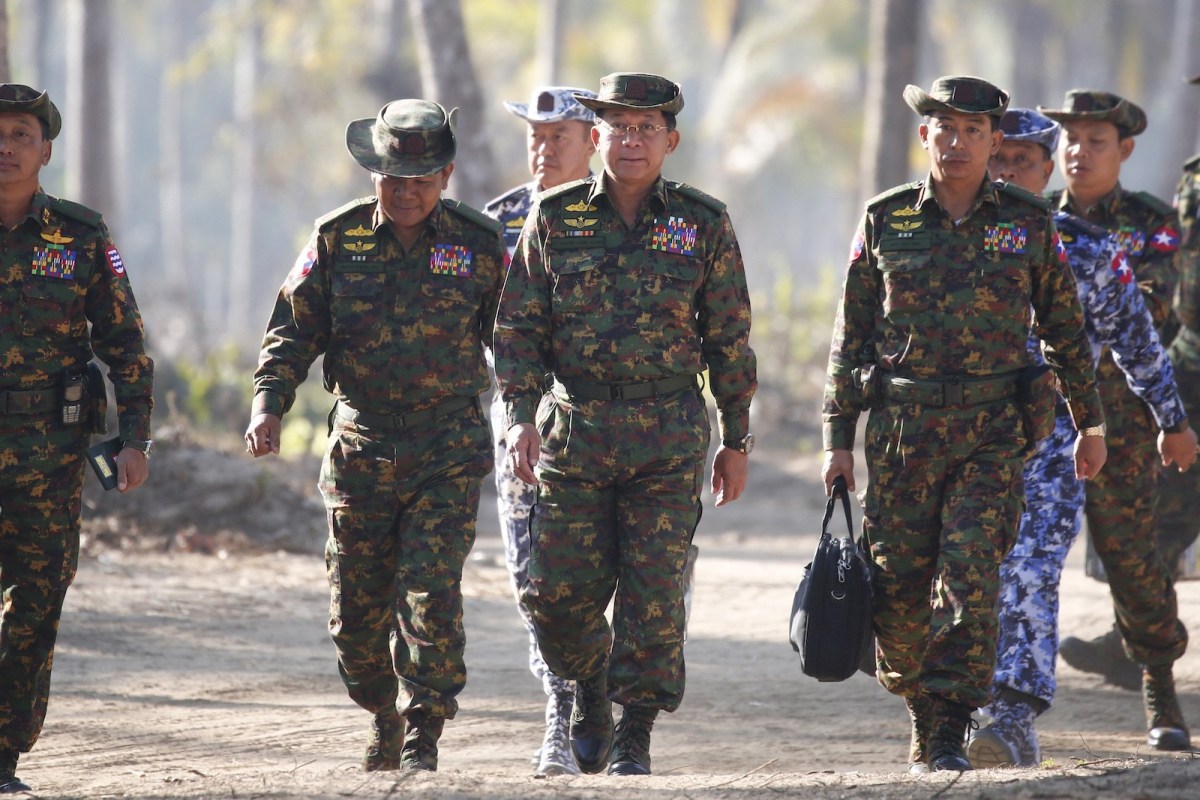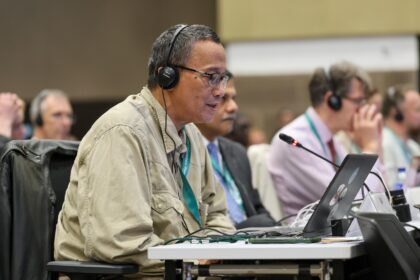[ad_1]
Last month’s military coup in Myanmar was a rude awakening for the international community.
Headlines celebrating the “dawning of a New Democratic Era†when Aung San Suu Kyi’s National League for Democracy (NLD) party took power soon gave way to calls to revoke her Nobel Peace Prize over her deafening silence on the genocide of Rohingya Muslims. While the spotlight was firmly fixed on Suu Kyi, the military lurked in the shadows, and a democratic Myanmar remained an illusion.
The international jubilation following the NLD’s electoral romp in 2015 was not tempered by reality. Though the party won the country’s first open general election since 1990, the exercise in democracy gave way to hybrid rule, a fragile sharing of power between the civilian sector and the military.
The 2008 constitution crafted by the Tatmadaw, Myanmar’s military, meant any civilian-led government would be heavily shackled. It reserved one-quarter of parliamentary seats for military officers – with 75% of votes needed to overturn constitutional amendments – and handed the Tatmadaw control over the Home, Defense, and Border Affairs ministries. It left the NLD subject to the military’s effective veto power in parliament and without any control over Myanmar’s security apparatus.
For the NLD, as outlined in its 2015 election manifesto, reforming the 2008 constitution was a prerequisite for “a genuine multiparty democratic system.†But its efforts continued to hit a dead end.
In January 2017, Suu Kyi’s adviser tasked with designing a new charter, the prominent Muslim lawyer Ko Ni, was shot dead under suspicious circumstances. Ex-military officers were linked to his assassination. Then proposed amendments to the constitution were inevitably rejected by parliament early last year, given the military’s intransigence.
Alongside the anti-democratic constitution, the NLD inherited a nation with a plethora of ills antithetical to democratic progress. The list included severe economic inequality, one of the world’s longest-running civil wars, and deep-seated ethnic, religious, and geographic divides.
These cleavages would have made democratic development and effective governance an uphill battle in the best of times. But the NLD was also attempting to tackle it with a highly inefficient and corrupt bureaucracy, ailing from decades of junta misrule, with a band of aging former activists carrying little public-policy nous.
The Tatmadaw also retained its control over the economy. In the two decades to 2011, Amnesty International estimated that the military raked in around US$18 billion, including from licenses and land concessions.
Reforms that began in 2011 under then-president General Thein Sein’s push toward “disciplined democracy†led to a loosening of international sanctions on Myanmar. The NLD’s arrival a few years later only accelerated that.
This meant new trade and investment flows have likely been swept into the coffers of corporates opaquely tied to two military conglomerates, Myanmar Economic Holdings Ltd (MEHL) and the Myanmar Economic Corporation (MEC).
Indeed, the Tatmadaw has continued to gain revenues from a range of industries including beer, textiles, tourism and banking, including from business partnerships across Asia. Meanwhile, it has also been siphoning money from natural-resource extraction, from jade to natural gas, particularly across the country’s resource-rich ethnic hinterlands, where it has been stoking wars and grabbing land.
By some estimates, active and retired military officers and their associates control more than 80% of the economy.
Alongside constitutional and economic clout, Suu Kyi’s celebrity also gave the Tatmadaw a cloak to continue undermining Myanmar’s internal cohesion. It was under the command of Minh Aung Hlaing, Myanmar’s army chief – and leader of February’s coup – that the military systematically murdered, tortured, and raped Rohingya, driving more than 730,000 across the border into Bangladesh.
The army also amplified violence with other ethnic groups across Rakhine, Kachin and Shan states. The loosening of state control on digital services and the media under Thein Sein had already helped amplify ethnic tensions online.
With little control, and as the face of Myanmar, the military knew its operations would force Suu Kyi into a corner. The Tatmadaw’s actions placed her between the fervently nationalist Buddhist Bamar majority, a key electoral base, and her international admirers. By staying mum over the Rohingya atrocities and then defending the Tatmadaw against genocide charges at the International Court of Justice (ICJ) in 2019, she chose the former.
The move was likely another attempt to keep the Tatmadaw on her side, with her aim to nudge them toward constitutional concessions. Instead, it significantly weakened her international support, and further alienated ethnic minorities.
Suu Kyi’s focus on achieving constitutional change also meant her government neglected other aspects of Myanmar’s democratic development that were within its control. A colonial-era law continued to silence free speech, and the peace process with the country’s patchwork of ethnic armed groups largely failed to build bridges during the NLD’s time in power.
In terms of the economy, while legislation was passed to liberalize investment in the country, little was done to address Myanmar’s weak infrastructure, reliance on agriculture, and poor health-care and education systems. The Rohingya crisis also scared international investors. Meanwhile, poverty and inequality are also growing amid the economy’s exposure to the Covid-19 pandemic.
The Tatmadaw benefited from its power share with the NLD. It could line its pockets from the opening economy, maintain its monopoly on violence, and use the civilian government to absorb domestic and international blame. Suu Kyi’s decision to defend Myanmar at the ICJ then ultimately brought her even more domestic popularity among Buddhist Bamars, and into greater conflict with the Tatmadaw.
The elections in November saw the NLD entrench its position as Myanmar’s most popular party, gaining more than 80% of elected seats. Meanwhile the Union Solidarity and Development Party – the Tatmadaw’s proxy, populated by former commanders – managed a puny 7%.
As a bellwether for military popularity, that would have alarmed Minh Aung Hlaing. With the NLD’s constitutional aims and ambitions to federalize ethnic regions in mind, the military chief perhaps would have sensed a growing threat to the Tatmadaw’s ongoing political and economic power. The distraction of the pandemic, and personal ambitions, may have also influenced the decision to seize direct power.
While the February 1 coup may have checked Myanmar’s current experiment with democracy, the military has positioned itself in the way of a nation with a taste of change. Since the Tatmadaw began to shift power toward civilian rule in 2011, the poverty rate has fallen by more than 20 percentage points to 25%. Electricity and clean water now are accessible to millions more people.
A developing private sector has also given many more a shot at higher earnings, with economic growth averaging around 7% annually between 2011 and 2019.
With more than half the population below the age of 30, Myanmar’s demographics are also firmly stacked against military support. Many have come of age as the country’s growth spurt and rising Internet penetration – which went from being negligible in 2011 to more than 30% now – allowed them to learn about global news, trends and social movements.
Few will take the potential loss of material progress under direct Tatmadaw rule lightly. Indeed, citizens have increasingly seen democracy as a vehicle for better governance, if not more freedom.
The NLD’s rise to power lulled the world into a false sense of security. In the end, the messy socio-political realities of a country with a byzantine ethnic, military, and developmental ecosystem came to bear.
Sanctions and corporates fleeing military ties may help squeeze the Tatmadaw, but it may take a while to threaten its financial arsenal materially. The bigger short-term threat to the coup comes from the relentless protests across the country. The protesters know that whatever comes next, it should rise above the focus on electioneering and constitutional politics that plagued the last five years.
If a new civilian government does ever get another shot, focusing on such building blocks as peace, education, and inclusive economic growth may just be its best bet on the long road to democracy.
[ad_2]
Source link













